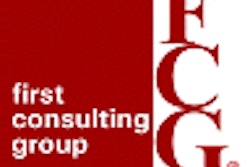SAN ANTONIO - The traditional radiology report generation process is widely viewed as inefficient and costly. And some researchers believe that speech recognition and structured-reporting technology can yield much-needed report workflow improvements.
As the primary "product" of the radiology department, the report needs to be delivered in a timely fashion, in order to positively impact clinical decision making and patient care, according to Dr. Eliot Siegel, chief of imaging at the VA Maryland Health System in Baltimore. The report also must be accurate and pertinent to the clinical care of the patient, he said. Siegel made his comments Thursday during "PACS 2002: Implementing CR/DR and Integrating the Healthcare Enterprise," a conference sponsored by the department of radiology at the University of Rochester in Rochester, NY.
Traditional reporting mechanisms are ill-suited to meet these requirements, however. Preliminary reports are typically not promptly available, and transcription is often performed in batches, Siegel said.
"Even when the transcription service is fully staffed, it might not be able to absorb the peak volume of dictated reports," Siegel said. "These problems delay the final report, frustrating the referring physician, delaying or preventing reimbursement, and degrading efficiency."
Dictation and transcription are also prone to errors, Siegel said. A study of nearly 5,000 radiology reports at the Brigham and Women's Hospital in Boston found that 33.8% of reports required post-transcription editing by radiologists prior to signature. Nearly 6% of the corrected errors were deemed substantive.
In addition, transcription services are costly, averaging approximately $2 or $3 per page, with an average of about $3.50 per report, Siegel said. These costs can add up to as much as 5% of practice revenues.
A different way
Speech recognition software offers a potential solution, condensing the nine-step reporting process to two or three steps, Siegel said. With a one-time equipment purchase cost, healthcare institutions can replace or reduce transcriptionists and immediately sign off on reports. Users typically report cost savings and major improvements in report turnaround time.
To achieve clinical success, speech recognition systems need to be fast, accurate, reliable, affordable, and integrated with the radiology or hospital information system, and, ideally, with the PACS, he said.
Speech recognition systems perform particularly well in environments that frequently use standard, or pre-defined, reports, he said. The use of templates and macros also permit faster report generation.
Accuracy rates reported in the literature vary from 90% up to 97%, depending on the study methodology. Accuracy will differ depending on variables such as the user, type of study dictated, and the use of macros/templates, Siegel said.
Anecdotally, users have noticed that a change in reporting style sometimes occurs among radiologists who use speech recognition software. They will sometimes produce shorter reports, change their phrasing, and make liberal use of macros and templates, he said.
"Radiologists tend to learn that there are certain phrases that the system likes and certain ones it doesn't like," he said. "They essentially are not only training the system, but are being trained by the system, for better or worse."
Planning for the implementation of speech recognition should include development of sound-dampening strategies in the reading area, as background noise can impact system performance, Siegel said.
It's also important to have a back-up plan for dictation in the event of system downtime, and, for example, a loss of connection to the HIS/RIS.
"The (HIS/RIS connection) is the trigger for identifying patient reports," he said. "When that is disrupted, there are major problems."
Training is also critical, Siegel said.
Today's speech recognition systems could benefit from higher accuracy rates, and better integration with PACS workstations, he said. The software should also require fewer keystrokes to operate.
Structured reporting software, which allows users to generate reports using techniques such as icons and pull-down menus, can also offer workflow enhancements to the reporting process, Siegel said.
A disadvantage of structured reporting is the potential for "look-away" time, or reductions in the amount of time radiologists spend looking at the image. In addition, imaging lexicons are not routinely available, and there's some difficulty in integrating the report with the image, he said.
In any event, the use of speech recognition is now in the clinical mainstream and will continue to advance rapidly in the next few years, Siegel said. It will also probably be used in conjunction with structured reporting, he added.
By Erik L. RidleyAuntMinnie.com staff writer
March 16, 2002
Related Reading
Speech recognition speeds reporting at Vienna hospital, March 3, 2002
eDictation aims to make dictation faster, cheaper, January 23, 2002
Speech recognition users need patience, training to achieve optimal results, June 15, 2001
Copyright © 2000 AuntMinnie.com




















